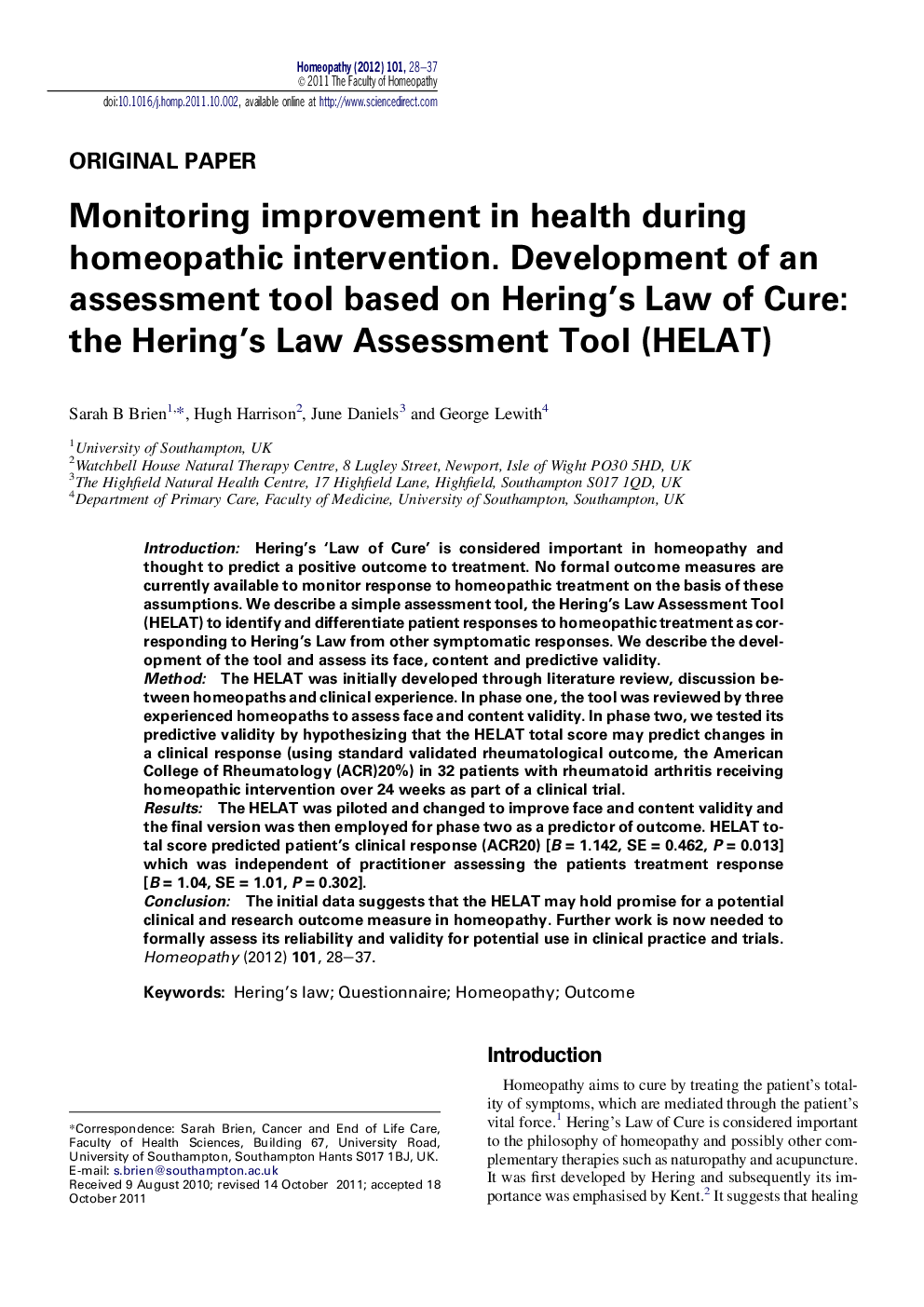| Article ID | Journal | Published Year | Pages | File Type |
|---|---|---|---|---|
| 2630105 | Homeopathy | 2012 | 10 Pages |
IntroductionHering’s ‘Law of Cure’ is considered important in homeopathy and thought to predict a positive outcome to treatment. No formal outcome measures are currently available to monitor response to homeopathic treatment on the basis of these assumptions. We describe a simple assessment tool, the Hering’s Law Assessment Tool (HELAT) to identify and differentiate patient responses to homeopathic treatment as corresponding to Hering’s Law from other symptomatic responses. We describe the development of the tool and assess its face, content and predictive validity.MethodThe HELAT was initially developed through literature review, discussion between homeopaths and clinical experience. In phase one, the tool was reviewed by three experienced homeopaths to assess face and content validity. In phase two, we tested its predictive validity by hypothesizing that the HELAT total score may predict changes in a clinical response (using standard validated rheumatological outcome, the American College of Rheumatology (ACR)20%) in 32 patients with rheumatoid arthritis receiving homeopathic intervention over 24 weeks as part of a clinical trial.ResultsThe HELAT was piloted and changed to improve face and content validity and the final version was then employed for phase two as a predictor of outcome. HELAT total score predicted patient’s clinical response (ACR20) [B = 1.142, SE = 0.462, P = 0.013] which was independent of practitioner assessing the patients treatment response [B = 1.04, SE = 1.01, P = 0.302].ConclusionThe initial data suggests that the HELAT may hold promise for a potential clinical and research outcome measure in homeopathy. Further work is now needed to formally assess its reliability and validity for potential use in clinical practice and trials.
